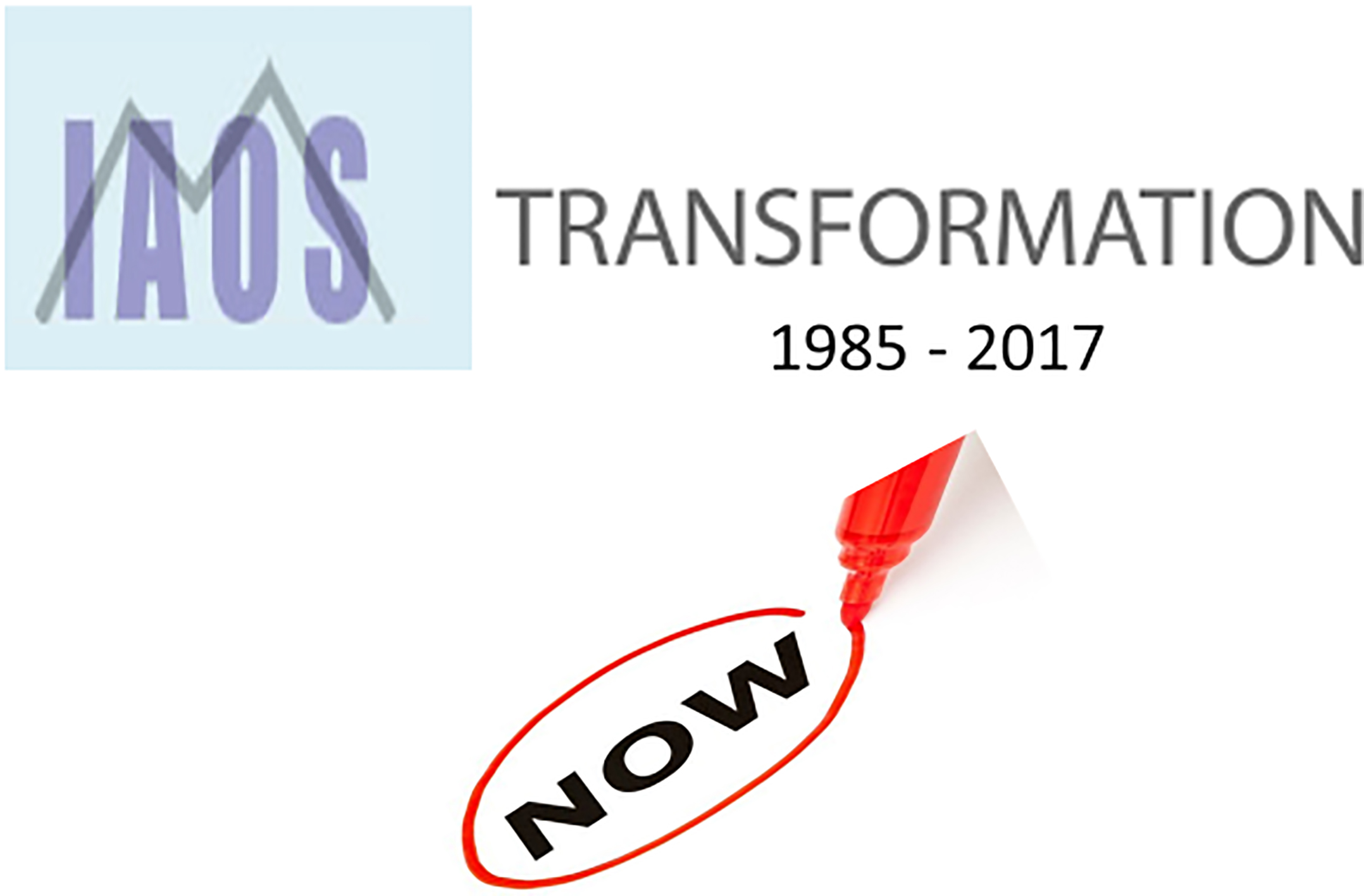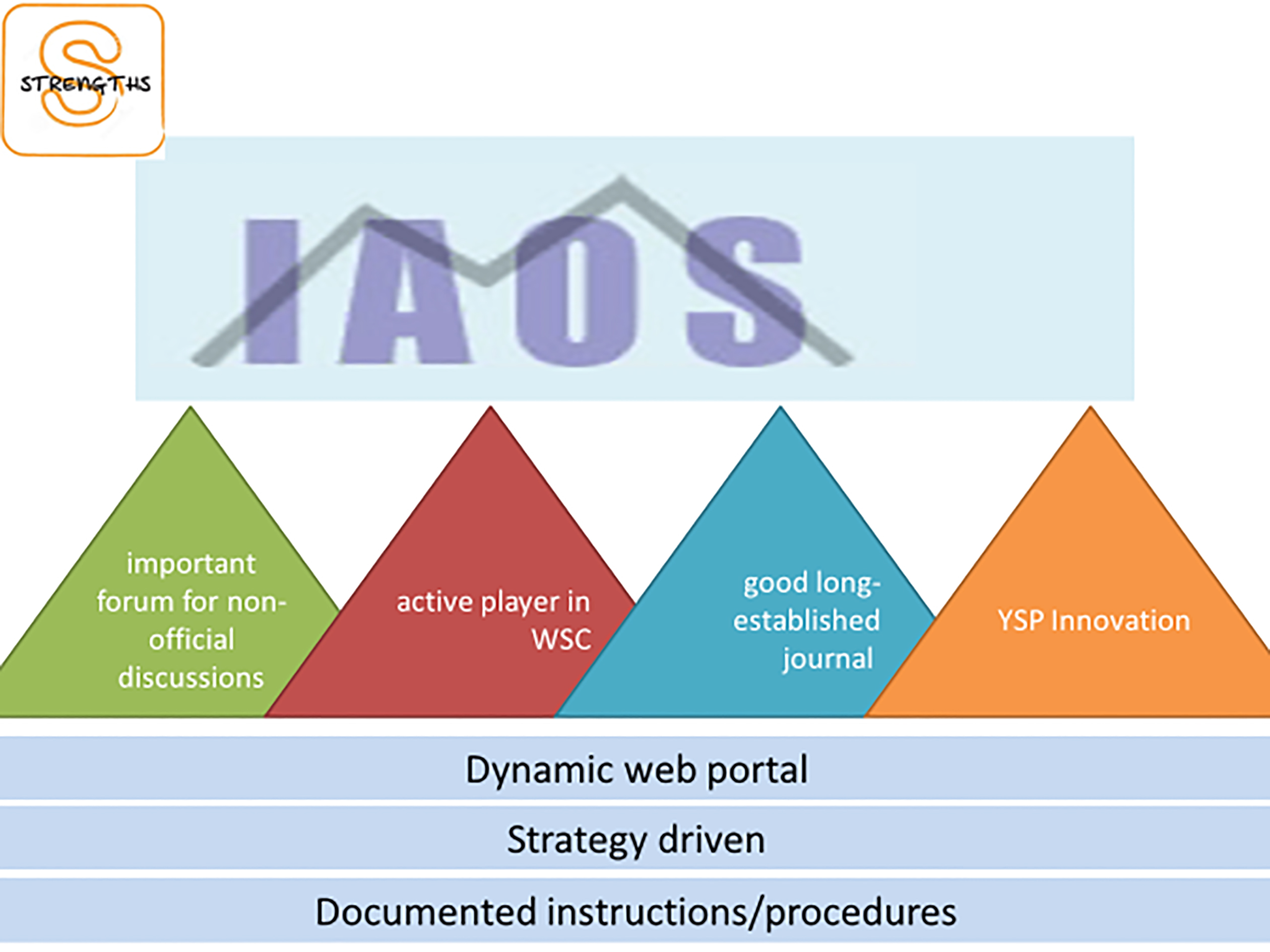The transformation of IAOS: Current status1
The 61

Below you will find a summary of Ola Awad’s presentation.
“The future of the IAOS is in the hands of its members!” This was the lead-in by Ola Awad to her presentation. She began by saying that IAOS is now over 30 years old (started in 1985). It is an international non-governmental organization (NGO), which was created and developed as a specialized section of the International Statistical Institute (ISI). Its objectives are to promote the understanding and advancement of official statistics and to foster the development of effective and efficient official statistical services on a global basis.
She proceeded to say that the session was meant to reflect on the transformation of the organization from 1985 to the present time (2017), and that she would focus on its current status (2017). “Great efforts were invested to get it established, developed and to nurture its growth worldwide. Without a doubt, IAOS has been transformed from its beginnings in the 1980s, through the 1990s and afterwards.”
She reminded the audience that the current status of the association has its roots in what was inherited from the past. It is a voluntary organization with members scattered around the globe. IAOS is now well known within the statistical community. The challenge is to maintain that and to build on what has been achieved.
She provided some statistics about the association:
Since its inception, IAOS has conducted 15 international conferences, the first of which was in Rome in 1988. The most recent was in Abu Dhabi in 2016. Since 1985, the IAOS has enjoyed the presidency of 16 presidents, most of whom have come from Europe. In 2016, the association counted 401 individual and 43 institutional members. The list of countries with more than ten members include United States, United Kingdom, Japan, the Netherlands, New Zealand, Malaysia, Luxembourg, Finland, Australia, Brazil, Germany, Sweden, Italy, Canada, and France. The 2016 IAOS conference in Abu Dhabi, UAE, attracted around 700 attendees, including 175 from overseas and international organizations.
Ms. Awad went on to reflect on what she sees as the association’s strength and weaknesses, what opportunities it has for the future and what threats might work against its success.
“What are we good at? What are our core activities?” She finds that there are at least three main vehicles through which IAOS can achieve its objectives: The Statistical Journal for the organization, SJIAOS; the biennial conferences and the Young Statistician Prize (YSP).
Furthermore, the association now has two key procedural manuals – important steps in the process of institutionalizing the functions of the association. The two manuals pertain to the YSP and the IAOS conference. Ms. Awad stated: “I think we have accumulated many good experiences in these two areas and we have managed to document the related instructions.” However, she was also quick to point out that more efforts are still needed to produce written and well documented protocols related to the IAOS committees, the functions of the IAOS president, the functions of the IAOS president-elect, the nomination of IAOS host countries, and other areas such as budgetary and reporting.

She reminded the audience that IAOS is strategy driven. The initiative to prepare an IAOS strategy came as a response to further develop the services of IAOS to meet the growing challenges facing official statistics.
The strategic plan for 2015–2017 addresses organizational and strategic directions to transform the IAOS to a more relevant entity in the international statistical community. It includes four strategic objectives. The first objective is to increase the relevancy of IAOS. Are IAOS activities relevant and do they meet expectations of stakeholders? The remaining objectives are: Increasing the visibility of IAOS at regional and international levels, investing in creating mutual beneficial partnerships, and institutionalizing IAOS functions.
Ola Awad focused on IAOS being an active player in the WSC, sponsoring a journal and an award and having a website presence.
IAOS is an active player in the WSC as it organizes sessions at every ISI conference. IAOS produces a long-established journal with an increasing readership. The journal plays an important role in sharing good practices and in attracting new members. IAOS sponsors the YSP – an innovative way to strengthen capacity building, increase awareness as well as attract young members. IAOS has a website. The newly IAOS designed web portal is dynamic acting as a repository for all IAOS documents.
In summary, “We are a strategy driven association. We know where we are going! We have documented related instructions and procedures for YSP and IAOS conferences.”

Ms Awad also reflected on opportunities for IAOS as an association. There is a need to increase IAOS conference host prospects. The biennial conference is a great opportunity to increase membership and to identify regional and global opportunities to be seized to serve the broad purpose of IAOS.
The IAOS strategy complement that of the ISI [promotion, awareness, capacity building, and practices] which facilitates aligning priorities and make IAOS activities more relevant.
She speculated that a post-2015–2017 agenda could be utilized to increase geographical representation of different regions and to serve as a forum for some key discussions about the cross-cutting issues in IAOS events. Coordinating with ISI sister associations could bring more visibility to each one and help in aligning common priorities. “The integration of sister associations is an opportunity to capitalize on our strengths and grow much stronger.”
IAOS should adopt social media as a communication tool with members as well as the statistical community. “Embrace social media. Social media will make IAOS more attractive to young statisticians.”
The former IAOS president recognized that the association has weaknesses to overcome.
The development of the IAOS needs to rely more on members’ feedback and to reflect their needs and expectations in future strategies. The IAOS has limited formal engagement and influence on major Official Statistics policy/direction issues with the international statistical community. IAOS has become more actively involved in international activities such as the Statistical Commission. But more efforts are needed in this direction.
And there are factors working against the efforts to achieve goals. For example, the international conference timetable is very crowded; there is limited coordination of conferences across the ISI family:
“Compared with the time of the foundation of the IAOS, there is an increasing number of international conferences to discuss various subjects of official statistics. It has become more challenging to convince the international statistical community of the nature and the essential roles of the IAOS biennial conference.”
Before yielding the floor to the incoming IAOS president and his vision for the future, Ms. Awad concluded her talk my saying: “Where are we going and how are we to get there? The future of IAOS is in the hands of its members.”





